Propagate and increase plants by layering
• Planting periods
• Storing Plants prior to Planting
• Planfor's perforated 1-litre Pots
• Soil Preparation
• Working the soil in winter
• Growing seeds in a pot
• Raising seedlings
• Planting Directly into the Soil
• Planting in Pots, Containers or Planters
• The good drainage for potted plants
• Planting Balled or container grown plants
• Planting bare rooted plants
• Planting Truffle Trees
• Planting Agapanthus
• Planting spring-flowering bulbs in pot
• Planting Fern in pot
• Planting a hedge of ornamental grasses
• Planting hardy plants in the autumn
• Succeeding in planting conifers
• Repotting a plant
• Propagate and increase plants by layering
• Moving a tree or shrub
• Plant a Magnolia
• Planting a tree which is going to grow quite tall
• Planting a hedge of bamboos
• Planting a fruit tree
• Potted plants which last a long time
Layering is really a 'risk free' method compared to sowing or taking cuttings. Indeed, the new plant is not separated from the parent plant as long as it has not developed roots. But it does take longer
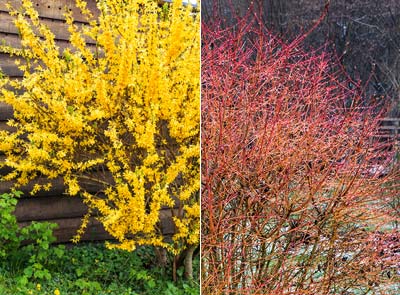 Forsythias and dogwood are easily propagated using the layering method.
Forsythias and dogwood are easily propagated using the layering method.
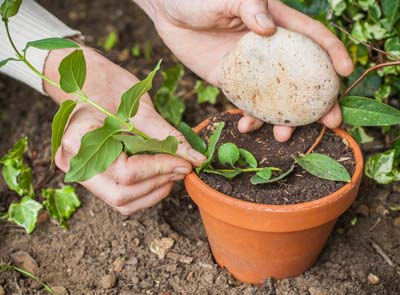
The layering method can take place any time during the year.
Only for some plants
Layering is a precious method to propagate climbers, renowned to be difficult (even impossible) to take cuttings from. The plants which are giving the best results are anyway the ones which have flexible stems that can be bent to the ground without breaking. The principle is simple: By putting a stem in contact with the soil, roots often appear at this meeting place. As the stem is still linked to the parent plant (unlike a cutting which is cut from it), taking roots can take a long period of time as the section intended to produce roots is under no risk of withering. The roots often form at the leaves' base.
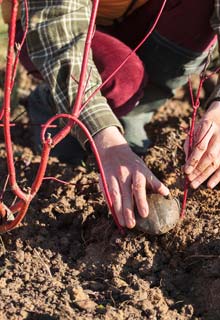
Bend the stem up to the ground and wedge it.
When it is lying, it is ready!
At the base of the plant that you wish to propagate, hoe the soil near a stem which is long enough to be bent to the ground. Loosen up the soil, about 10cm deep. If the soil is hard (like in a courtyard) proceed in a large pot. Bend the stem without breaking it until it touches the soil. At the meeting point, force the stem to stick to the ground by placing a stone or a peg over it. You can also bury it, providing you do not cover up the extremity of the stem. Last trick: Cover the stem with dead leaves which keep the humidity and promote the appearance of roots.
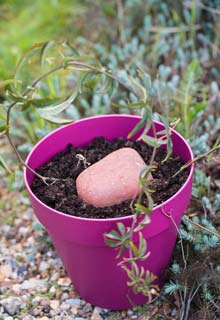
Some climbers take a long time to develop roots (Passion-flower, wisteria…).
A long wait
Let the buried section take roots without touching it… and wait. This technique is a little long: depending on cases, roots only start to appear after a year, and rarely less than three months (except for ivy). The soil must be kept moist, even in summer. If it does dry out, nothing will happen. After a few months, check the buried section to see if it has developed roots. If they are abundant, separate it from the parent plant (see below) or leave the layer one more season: you do not risk anything in waiting longer than necessary!
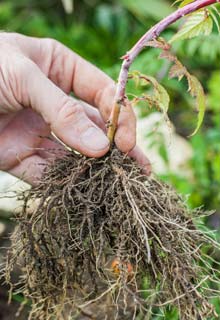
In order to be separated from its parent plant, the layer must have a thick 'bun' of roots.
The separation
It is the delicate step of the layering method. The roots must be abundant and long: The stem must have a thick 'bun' in that place. If this is the case, you can separate it. The separation consists in cutting the stem between the parent plant and the part which has taken roots, to make it independent from the parent plant from which it comes from. It is best to do this in the spring or in the autumn, when the roots are active.















































































































































































































































